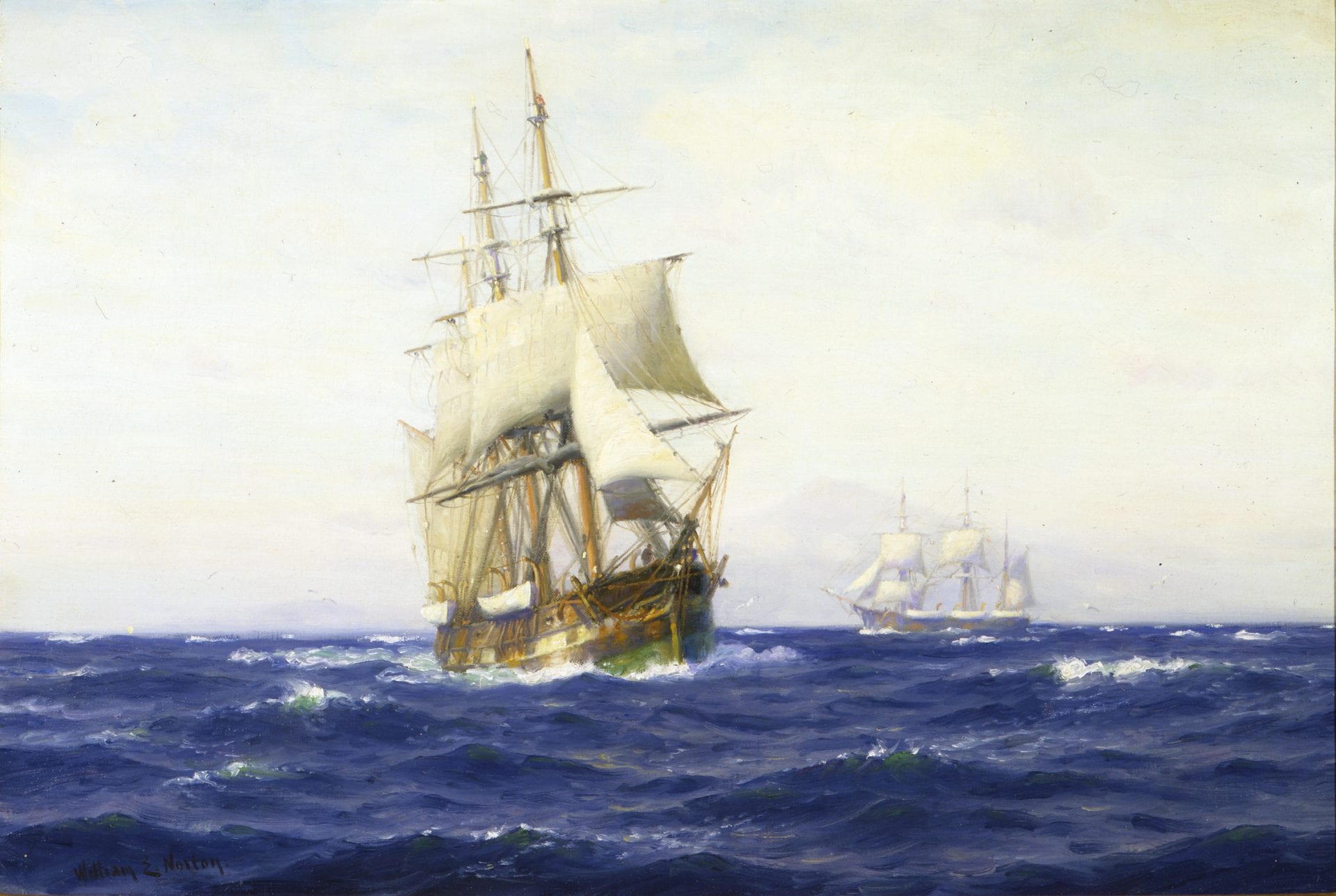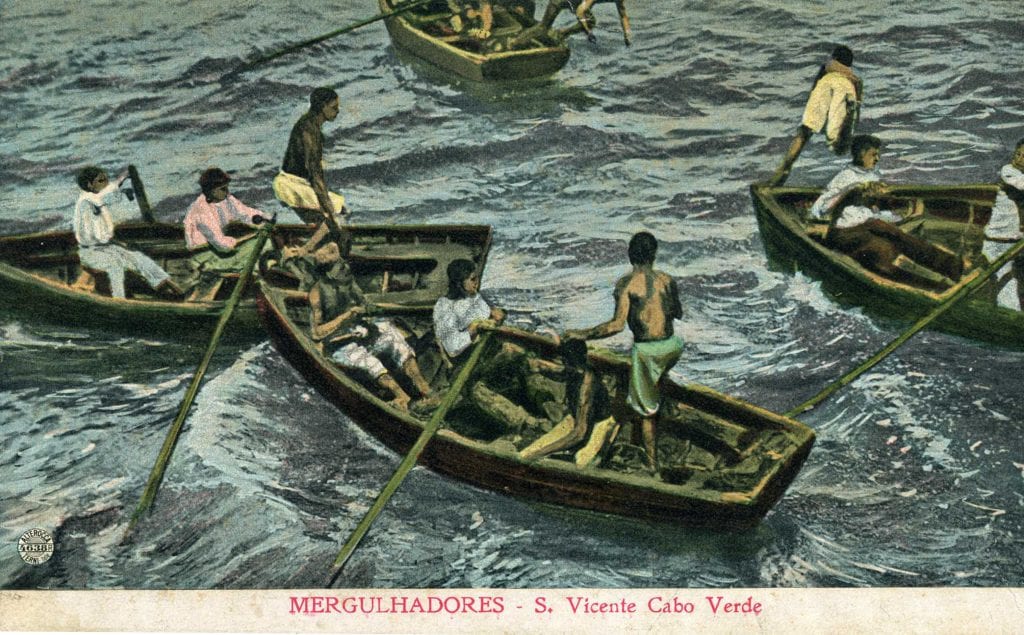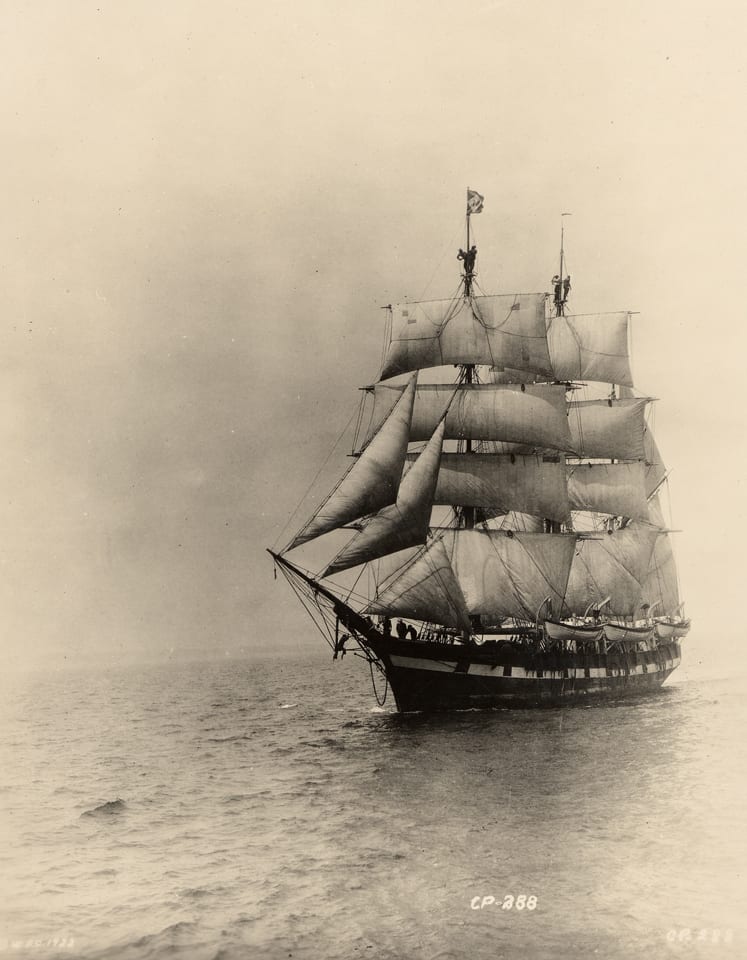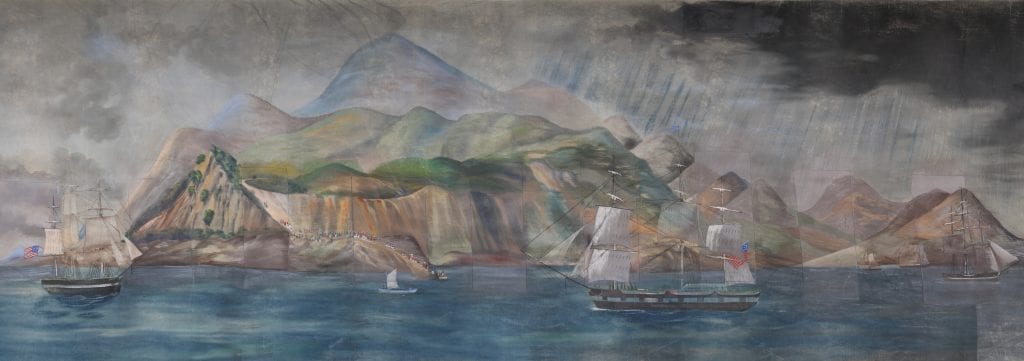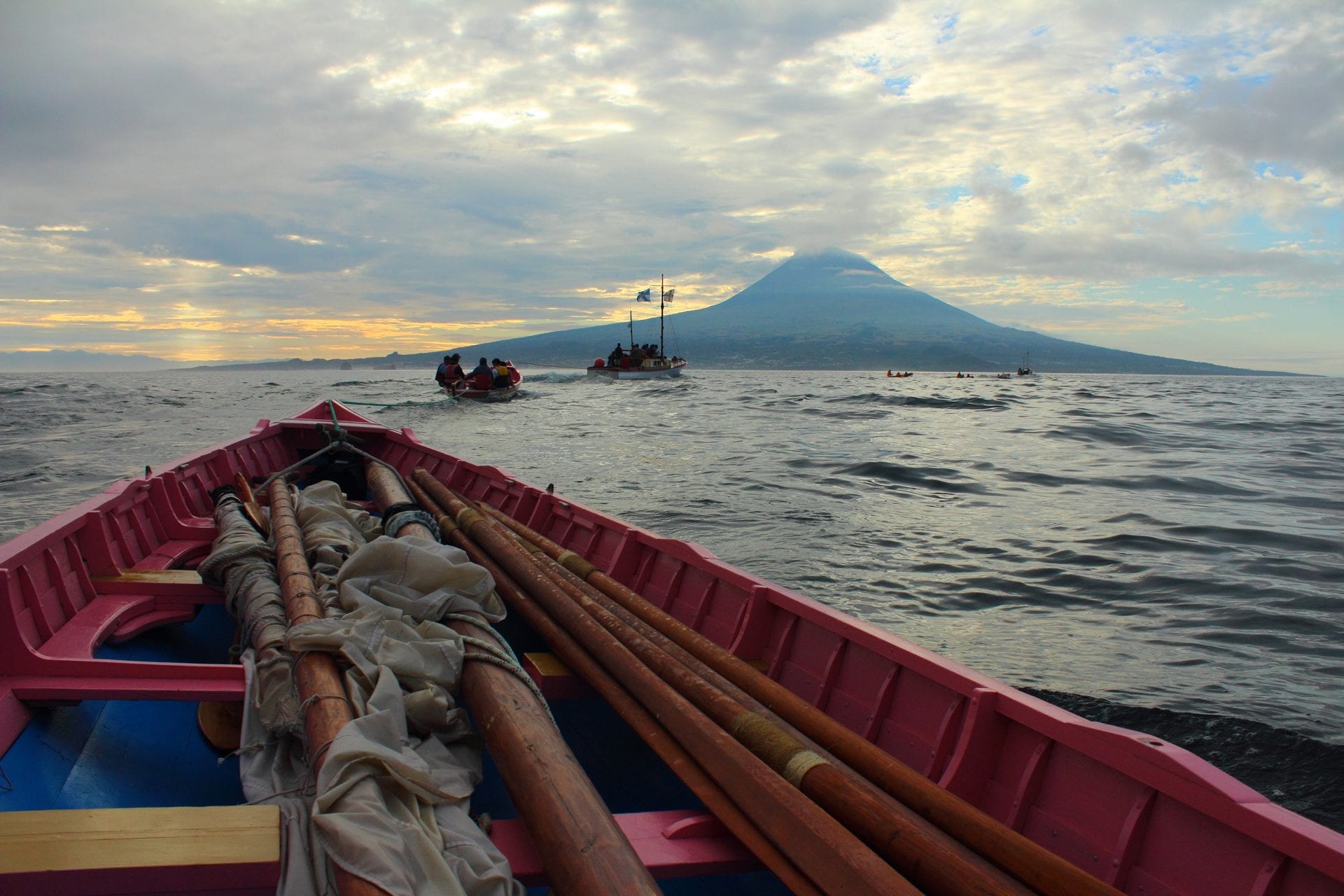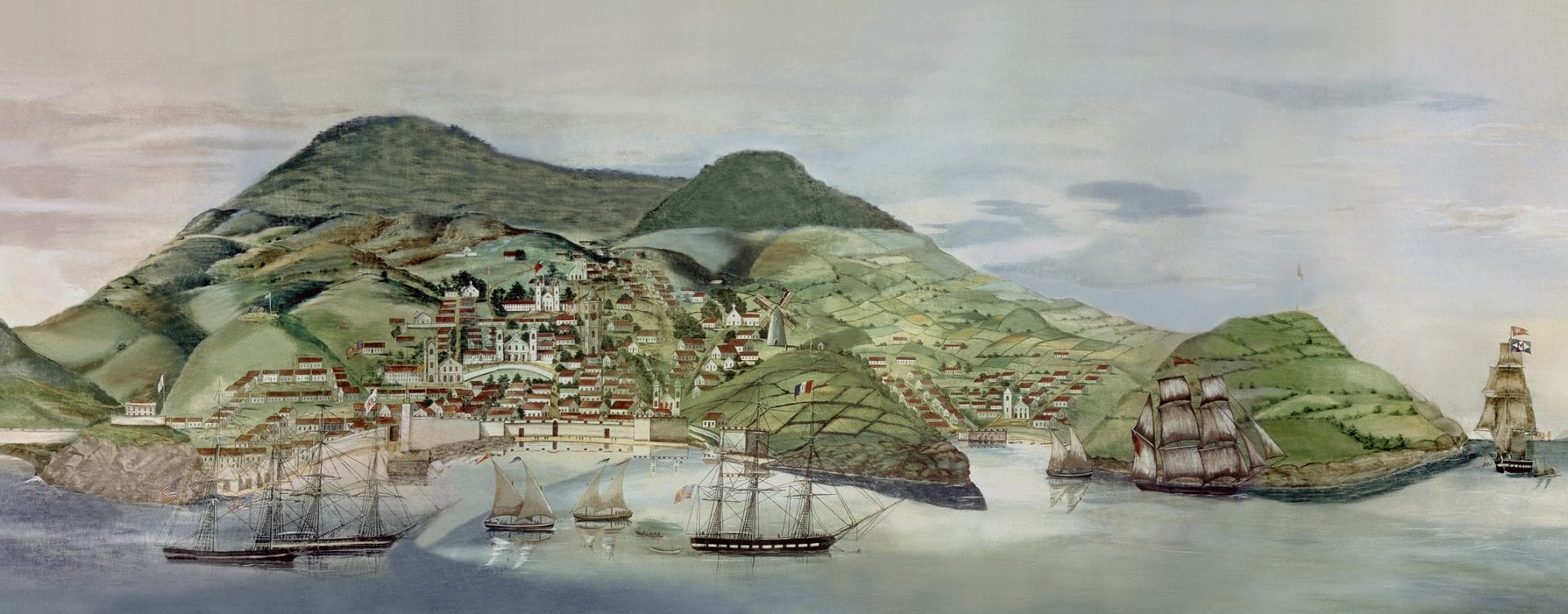A Voyage Around the World
Opened: June 23, 2012
Grab your passport and experience a new world encountered by New Bedford whalers. Voyages connected world cultures through commerce and helped establish American hegemony in far-flung ports. Through both commercial activity and crewmen enlisting and disembarking, these voyages set in place the initial pattern of immigration that follows to this day.
Most voyages first reached the Atlantic Islands of the Azores and Cape Verde, where captains fully outfitted with supplies and crew for the long voyage ahead. This strategy made the Portuguese influence of these voyages and their cultural dissemination quite strong. Whaling literally took these men around the world, across all oceans, even to the polar extremes of the globe.
The cultural exchanges and connections made through these voyages of commerce left evidence still visible today not only in the large Portuguese and Cape Verdean communities in New Bedford but in communities on the opposite side of the country where whaling was once an important industry. The fact that California and Hawaii have significant populations of Portuguese is rooted in whaling, and the exhibit explores the Portuguese communities that remain an important legacy of the Luso-American whaling experience.
A Voyage Around the World demonstrates the remarkable geographical breadth of a real whaling journey. On this imaginary voyage you will begin with the Atlantic Islands of the Azores and Cape Verde, as you start with the many cultures encountered by whalemen. Then onto Brazil where the Portuguese influence is apparent and whaling was fruitful along the coast. Next, is the treacherous journey around South America’s Cape Horn where fierce winds, huge waves, and strong currents are the norm, but where the warm Pacific awaits. Each locale is vividly illustrated by large-scale reproductions of Benjamin Russell and Caleb Purrington’s 1849 Grand Panorama of a Whaling Voyage Round the World.
Our collection is overflowing with materials whalemen brought back from the many Pacific Islands including the lush Galapagos, Marquesas, and beyond to Fiji, and Samoa. By combining the Panorama images with art, artifacts and ethnographic objects representative of the cultures, as well as 19th century and early 20th century illustrations, sea charts, prints, logbooks, journals and account books, the curatorial staff, has created a powerful and evocative interpretation of the Portuguese experience in the Yankee whale fishery as it encountered these diverse communities.
The exhibition provides a wide sampling of these diverse cultures, but the focus is on regions including Brazil, California, Hawaii, and Alaska where the influence of Portuguese crew and their legacy becomes clear.
CAPE VERDEAN MARITIME EXHIBITION
Cape Verdean Gallery
Opened: July 5, 2011
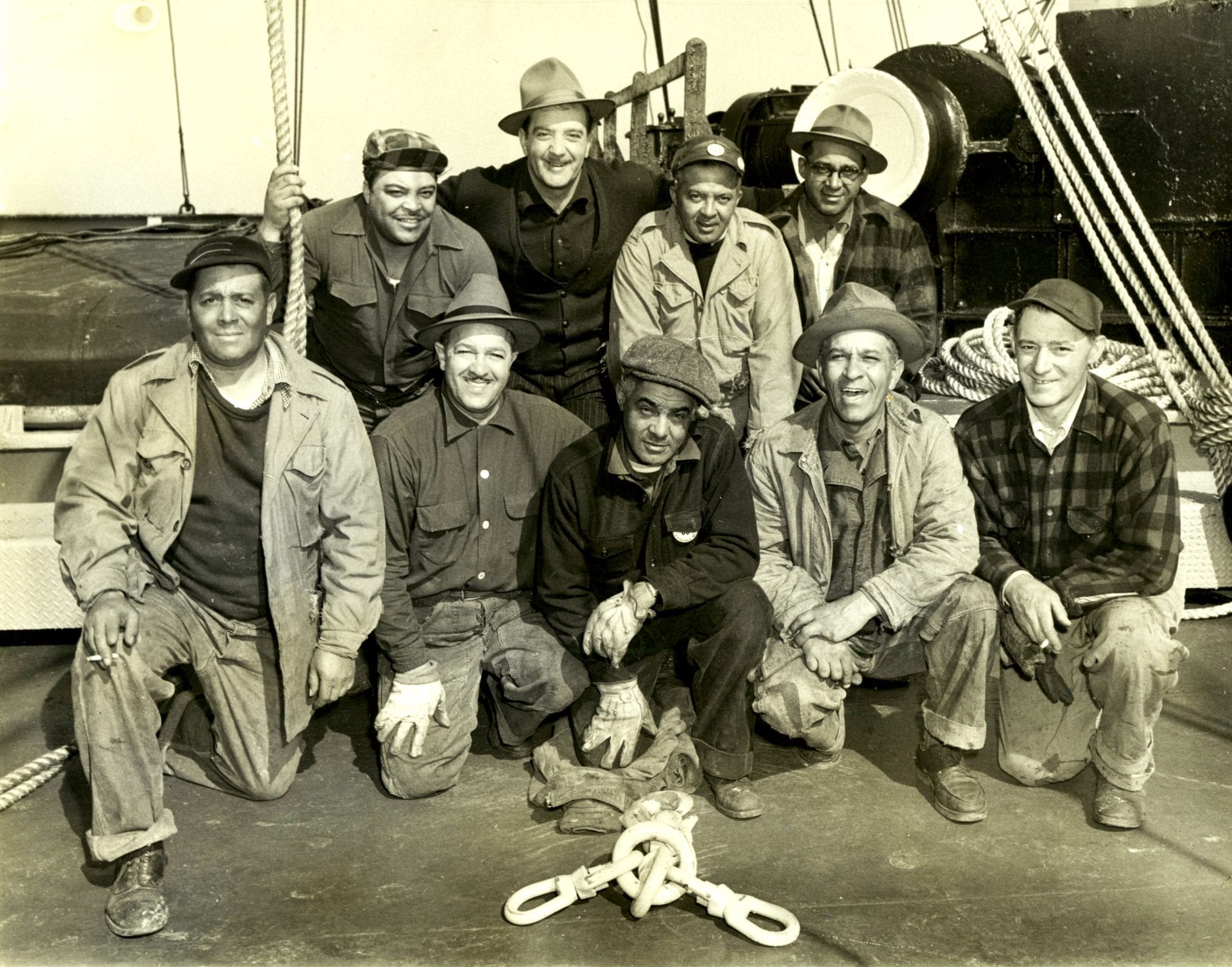
This exhibition explores the Republic of Cape Verde, its people, maritime history, connections to New England, and the legacies that continue to tie New Bedford and its culture to Cape Verde.
This exhibition captures the essence of the important connections between New Bedford and Cape Verde, the unique characteristics of Cape Verdean culture, and the special legacy of that culture and history here in New Bedford.
Trade between Cape Verde and New Bedford dates to the 1790s and earlier when New Bedford merchant vessels, bound for seal skins taken in the southern ocean, stopped in Cape Verde for supplies. From the middle of the 18th century the islands were also an important trade destination as the Isle of Sal provided salt, an important commodity, and American merchant vessels stopped there frequently to fill their holds with this valuable produce. Clothing and cloth were the most commonly traded American products.
Located off the westernmost cape of the continent of Africa, their geography also placed the islands in the direct path of whaling vessels sailing to the southern capes. As whalers and traders visited the islands for foodstuffs, water, and salt, the islanders themselves often joined the passing vessels. New Bedford whaling agents commonly instructed their masters to transship oil home from the “Cape de Verdes”. American whalers from New Bedford visited the islands beginning as early as the 1790s and began more regular trade in the early 19th century, mostly for fruit (principally oranges, bananas, coconuts, and watermelons) as well as hogs, chickens, and goats. Free Cape Verdean men sometimes joined the vessels as crew, often sought deliberately by whaling shipmasters eager to fill berths on their ships. The island men left their arid homeland; a homeland often plagued by disease and active volcanoes as well as a just horror of enforced military service, and “throwing themselves on the wings of fortune”, emigrated to New England on board the convenient vehicle of the passing whaler. As the men left, at the rate of as many as one hundred a year, the women were often left behind. The Secretary General of Cape Verde, reporting in 1874 on the status of women in the islands, noted that due to so many men leaving onboard visiting whalers, “there is a great disproportion between the male and female sexes”, and that many women sought passage to the U.S.A. on packet ships either in search of a husband or to join their husbands and family members.
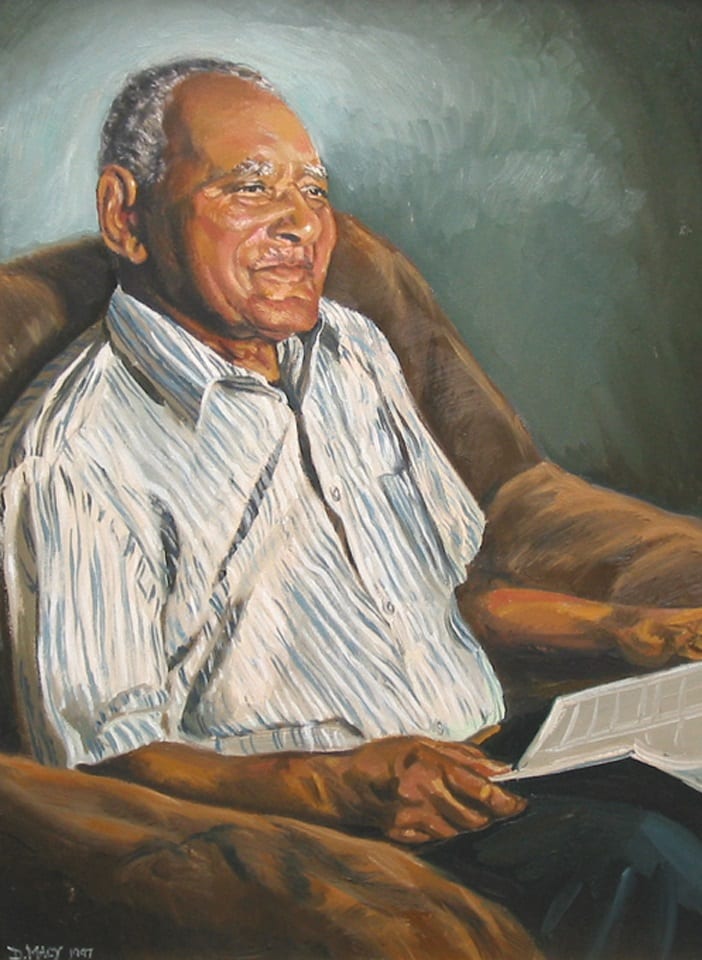
Once landed in New Bedford opportunities opened up for people willing to work. The city by the middle of the 19th century was a dynamic industrial maritime center. Its burgeoning growth supported a diverse demographic with peoples from all over the Atlantic world building new communities in the old colonial whaling port. These opportunities included shoreside labor, textile and cordage factories, agricultural work in the nearby cranberry and blueberry fields, and the opportunity to join a deep-sea vessel and apply innate skills and talents to work up through the ranks. The whale fishery provided Cape Verdeans various means to not only make a living but to excel. Not only Cape Verdean men benefited from the fishery. Immigrant women as well worked in the sail lofts of the city. Cape Verdean harpooners, of course, were legendary in the fishery. Men like João da Lomba and Bras Lopes, Theophilus Freitas and JosÂŽ Gomes were not only lead boatheaders, skilled whalemen, but officers onboard such famous vessels as the bark Sunbeam, the bark Wanderer, the brig Daisy and the bark Charles W. Morgan. These were the men who populated New Bedford's sperm whale fishery of the early 20th century.
Opportunity in New Bedford was certainly not limited to factories and whalers. As the 20th century went on and the ties between the islands and the port strengthened, entrepreneurs like Roy Teixeira, Henrique Mendes, Louis Lopes, Frank Lopes and Antonio Cardoza purchased, managed and owned packet ships like the Coriolanus, the Savoia, and the Arcturus.
These packet ships plied the Atlantic waters to and from the islands and New Bedford making the ports of Mindelo in São Vicente and Furna in Brava important points of embarkation for thousands of Cape Verdean immigrants to the United States. The majority settled in New England. Importantly, not only did Cape Verdeans settle in New Bedford, but between 1860 and 1965 41% of the packets trading between New England and the Islands were owned by Cape Verdeans.
AZOREAN WHALEMAN GALLERY
Bourne Building main level and upper level
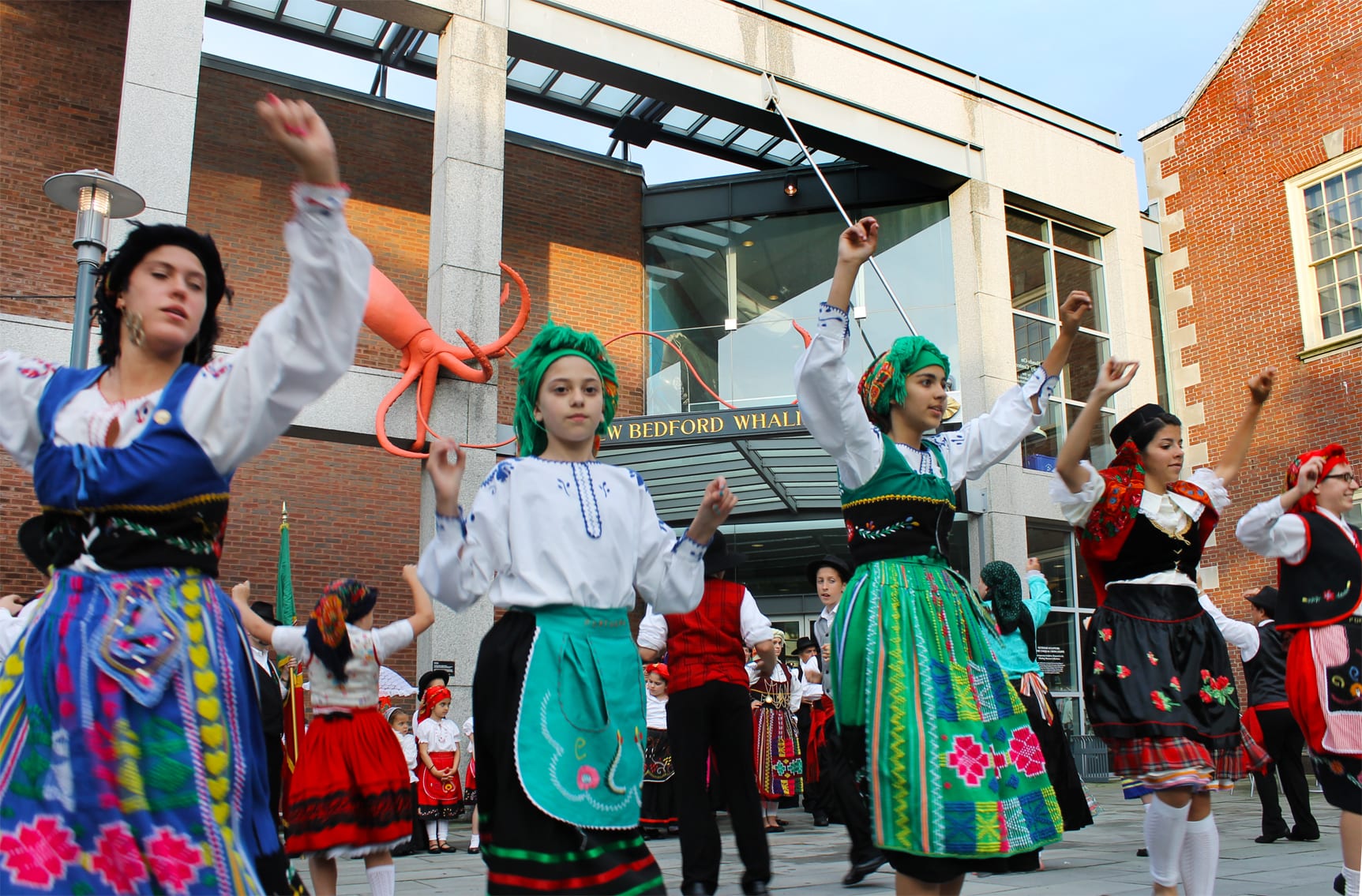
The Azorean Whaleman Gallery is the only permanent exhibition space in the United States that honors the Portuguese people and their significant contributions to this country’s maritime heritage.
It explores especially the Azorean impact in our region and the development of a vibrant Azorean community in New Bedford. The relationship between the Atlantic islands of the Azores and New Bedford, Massachusetts demonstrates the power of maritime culture to link peoples, ideas, traditions, and communities.
Since the United States’ earliest years, Yankee ships have visited the Azores’ shores. Prevailing westerly winds, the north-easterly flowing Gulf Stream, and a location in the middle of deep water sperm whale habitat made the islands perfect to serve the needs of whalers. Whaling ships took on both provisions and crew in the Azores, laying the foundation for a long and deep relationship between the islands and American whaling ports such as New Bedford.
The Portuguese in New Bedford continued to be tied closely to the sea, working on whale ships as both sailors and captains. They entered the business, as ship owners, textile manufactures, and entrepreneurs. Azorean Americans retained close ties to the islands while creating a unique, dynamic community in the United States.
The Azorean Whaleman Gallery has recently been updated. Two major new elements are a large-scale model of an Azorean Whaleboat (view Azorean Whaleboat Model photographs on Flickr), and a recreated lookout (vigia).
